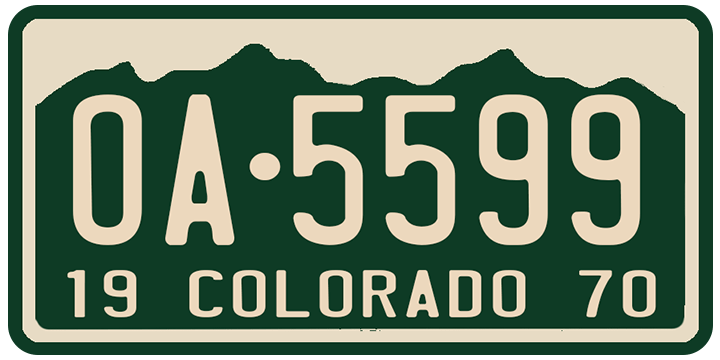
November the 5th is upon us again in all its fiery, noisy, colourful (and usually chilly) glory. There are very few things that everyone agrees on and this annual celebration is certainly not one of them.
November the 5th, AKA Guy Fawkes Night, AKA Bonfire Night, AKA Fireworks Night) has, if anything, more points of contention than your average do.
For a start, it seems that not everyone sees Guido and friends' failure to destroy parliament as a reason to celebrate, but we'll hurry past the political aspect. The physical trappings of the event also elude consensus and firework safety campaigners regularly object to the building and burning of huge fires. When we get to the subject of detonating small, but loud and colourful, explosive devices, pet owners also join the fray.
So, how do we avoid being drawn into heated debate about fireworks, while still keeping our November 5th blog post on topic? (By 'on topic' we actually mean two completely unrelated topics that we somehow have to mash together: fireworks and number plates.) The solution is simple: we talk about blowing up cars, of course. After all, the word 'pyrotechnics' that we use in reference to fireworks is the same word that the movie industry uses for the art of making stuff explode and few things in films explode more frequently (and less believably) than cars.
Anyway, after taking far too long struggling to justify what follows, here is a short list of our top vehicle explosions in movies.
1. The Italian Job exploding van
Not only is this a famous explosion, it is also followed by one of the most quoted lines in British cinematic history. The Italian Job is packed with iconic cars of its time including an Aston Martin DB4, a Lamborghini Miura, two Type-E Jaguars and three Mini Coopers. Several vehicles go over cliffs to their destruction, crash into bulldozers and/or explode but it is the detonation of a Morris LC5 van with no clearly visible number plate that gets the most attention.
As the gang prepares for the robbery that provides the film's plot, they practise using explosives to crack a security van. At the end of the countdown, a large explosion destroys the vehicle completely and, as the smoke clears, an exasperated Michael Caine turns to Michael Standing's character, explosives 'expert' Arthur, and shouts, "You're only supposed to blow the bloody doors off."
Unlike most vehicles that blow up in movies, this one actually had a real reason to do so. It is far more common for things to go boom in shameless defiance of the laws of chemistry, physics and logic, as we will see.
2. The Goldfinger inexplicably exploding Mercedes
A little before the halfway point in the 1964 James Bond movie Goldfinger, Bond's Aston Martin is pursued by a group of rather tetchy chaps in three Mercedes-Benz cars bearing Swiss number plates. The cars appear to be two black 1956 190 models and a grey 220 SE. We couldn't make out one of the cars' plates but, as the mystery number wasn't on the Mercedes that blew up, we're not going to worry too much. The two plates we did manage to read were NE 5961 and NE 9641. The car bearing NE 9641 is the villain of our piece here. Not only was it full of baddies, the vehicle itself behaved in a silly manner.

To evade pursuit, 007 deployed one of his DB5's many gadgets and released oil onto the road. The Mercedes hit the slick patch, consequently running off the road and over a convenient cliff. Surprisingly, the car didn't wait until it hit the bottom; instead, it exploded as soon as it went over the edge, despite barely touching the ground.
3. Silent Night Deadly Night 2: A bad year for Chevrolets?
In reality, it is very rare indeed for a car to explode. Cars just don't do that. They don't blow up if you crash them, or if you shoot bullets at them. Even if a fuel tank gets bullet holes in it and a fire breaks out, that is all you would get - fire. Seriously, we've researched it and the reason is, basically, science.
The villain in 1987's SNDN2 shoots and punctures the radiator of a 1978 Chevy Chevette. The car flips and rolls, rights itself on all four wheels and then, of course, it blows up. In the world of movie tropes, the sarcastic explanation for non-explosive things randomly going kaboom is that they are 'made from explodium'. This is a prime example.
The rest of the movie is even worse so, of course, it has a cult following.
4. The Speed boom bus
Another example of that rare phenomenon, the valid reason for exploding: in this case the bus has been rigged with a bomb. Of course, that doesn't mean the 1994 movie makes a lot of sense. While a bomb is a perfectly good reason for a bus to blow up, excusing the fact that the bus crashes into an airliner at the very moment of detonation is harder. The film maker's motive seems to have been to justify a bigger boom. After all, why blow up a bus with a bomb when you can blow up a bus and a plane?
For those who simply have to know, the bus in Speed displayed the California licence plate 539724.

5. The Vanishing Point pre-bang switcheroo
Another cult movie ends our list. This is a particularly cheeky example, as it pulls a fast one (excuse the pun) at the end. Vanishing Point's star car is a 1970 Dodge Challenger bearing the Colorado licence plate OA-5599. The car and its driver lead the police a merry dance as they do their inept best to intercept it. The protracted chase in this film eventually ends with the Dodge's driver going completely kamikaze and deliberately driving, at high speed, straight into a makeshift barricade formed from two bulldozers.

As the rigid laws of the movie world dictate, the Challenger explodes on impact, exactly as a car wouldn't in real life. Or, at least, it appears to explode. If you view the scene in slow motion, and pay close attention, you will see that the car's shape changes in the last split-second. In fact, no Dodge Challengers were harmed in the making of that famous last scene. What we see is the shell of a 1967 Chevy Camaro, packed with explosives. The effects car didn't even have an engine and so had to be towed to its doom!
Explodium or Pinto?
As we have seen, the only rational explanation for many things in movies blowing up is that they must be made from explodium. When it comes to cars, however, there is another famous trope known as "Every car is a Pinto" that may be applied instead, or as well.
Ford launched its Pinto model in 1970. The ill-fated car had a serious design flaw that placed its fuel tank between the rear axle and the bumper, rendering the tank vulnerable to puncture in the event of a rear-end collision. Escaping fuel could then spill onto the hot exhaust pipe, or over the engine of the colliding car, and ignite. The flaw led to several Pintos catching fire after minor accidents, so the maligned model was taken off the market in 1980.
So there we have the spectacular, exciting and completely irrational world of exploding movie cars. Next time you watch a movie that features cars blowing up, ask yourself which explanation you would apply in each case, Pinto or made from explodium?
Plates making a big bang
Personal number plates can be great for marketing your business as you can see from these sparkling examples.

Jon Culverhouse, MD of Fantastic Fireworks, owns the ultimate Bonfire Night number plate!
www.5nov.com

Sheffield based Galactic Fireworks, run by managing director Nigel Turver and family, have MR05 NOV.
www.galacticfireworks.co.uk
